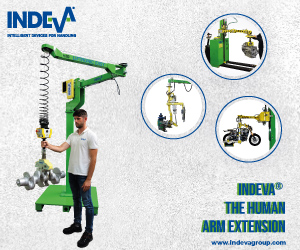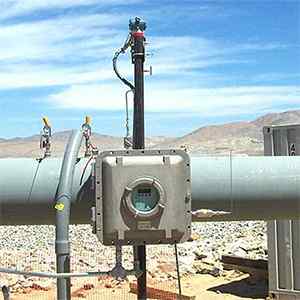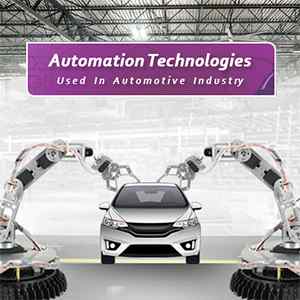Articles
Top 10 Countries with Highest Industrial Robots Density
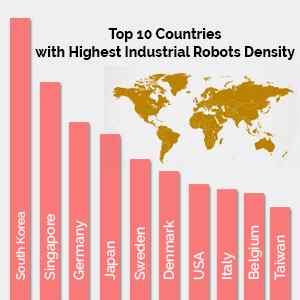
Industrial robot market has been showing an exponential increase over the past few years. The term ‘robot’ refers to appliances and machines that are monitored and controlled by a computer. To ease human workload, industrial robots are used and they are designed to perform repetitive chores quickly when compared to human beings. Robots are used in various types of industries as they help to save on labor costs.
The International Federation of robotics (IFR) has issued a report stating that there has been an up surge in global robot density, with an average of 74 units per 10, 000 workers globally. That's up from 66 units per 10,000 workers in 2015.
According to IFR World Robotics 2017, “The sales of the global industrial robot sales are estimated to increase by 18% to about 346, 800 units. From 2018 to 2020, global industrial robot sales are estimated to increase by at least 15% on average per year. Between 2017 and 2020 it is estimated that more than 1.7 million new industrial robots will be installed in factories around the world.”
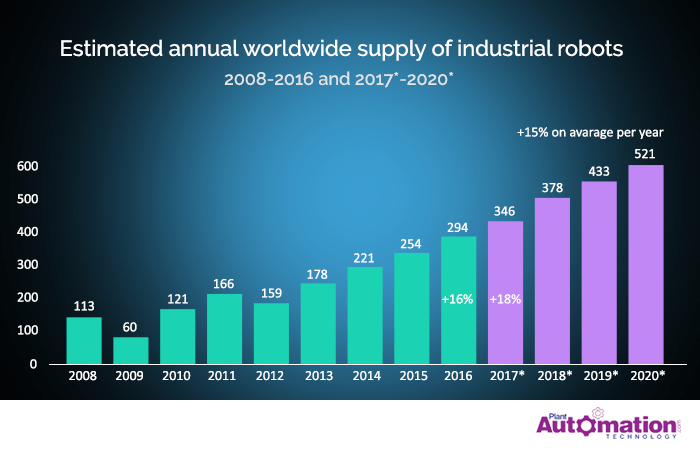
There is huge growth in industrial robot sales in the highly automated car manufacturing sector. Therefore, countries with strong automotive industry growth will have the high robot density. And, industrial robots are also making their way into other industries such as the metal and machinery industry, the rubber and plastic industry, and the food and beverage industry.
There are many countries that showcase interest on industrial robots including South Korea, Singapore, Germany, Japan, Sweden, Denmark, USA, Italy, Belgium and Taiwan.
Why these countries prefer industrial robots?
In the recent times, industrial robots have been gaining popularity due to rise in manufacturing complexities and demand for higher and competent productivity. The usage of robots has helped industrial development to grow rapidly, beyond expectations.
Reasons why these countries choose industrial robots:
• Shortages of skilled labor
• Increasing focus on workplace safety
• Rising wages in emerging markets
• Continuous quality improvement
• Decline in products’ life cycle and increase in the variety of products
Here is how Industrial Robots Are Eliminating These Challenges?
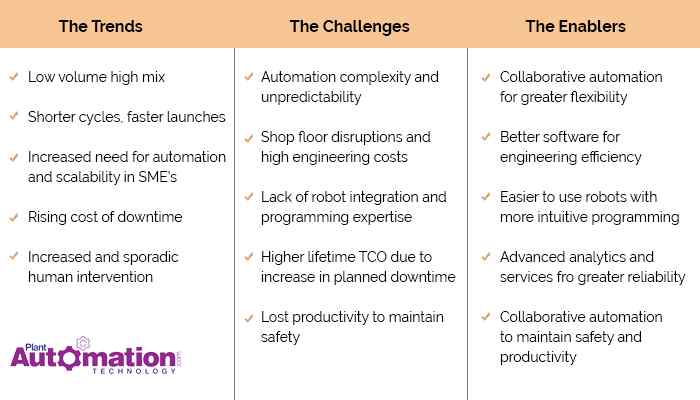
As manufacturers are trying to build out the vision of Industry 4.0, they will embrace advanced machines to enhance the digital transformation of their operations. Companies try to improve productivity, meet consumer’s expectations for customization and drive continuous product innovation while consistently lowering costs.
Future manufacturing/industries:
Industry 4.0 allows manufacturers to create unique customized products and high-quality products at competitive prices with a quick delivery time.
Here is the list of top 10 countries with highest industrial robots density:
1) South Korea
2) Singapore
3) Germany
4) Japan
5) Sweden
6) Denmark
7) USA
8) Italy
9) Belgium
10) Taiwan
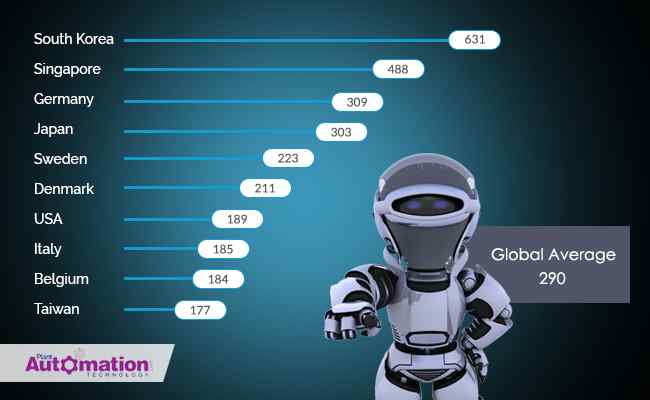
Source: Forbes
1) South Korea – 631 Industrial robots per 10K employees
Robot density can be referred to the ratio of industrial robots to employees.
South Korea holds the top place for the world’s highest robot density beating out China, Japan, Germany and the United States. It holds a robot density of 631 per 10, 000 employees, which showcased a huge rise from 531 in 2015.
Why South Korea is in the highest position?
• The IFR says, this is due to the installation of a high volume of robots particularly in the electrical and electronics and automotive industries.
• South Korean government has committed to use $450 million robotics over the next five years in order to maintain its lead.
2) Singapore – 488 industrial robots per 10K employees
Singapore has the second highest robot density, with 488 robots per 10, 000 employees. Singapore is known for adopting and developing robotics and automation solutions. 90 percent of Singapore's industrial robots are installed in its electronics industry.
According to the International Federation of Robotics (IFR), the number of robots in Singapore grew by a Compound Annual Growth rate (CAGR) of 20 per cent, outstripping the global CAGR of 6 per cent, between 2010 and 2015.
Why Singapore is in the second position?
• Singapore ranks the second position because nearly 905 of robots are installed in the electronics industry.
• Singapore witnessed huge boost in 2016 with the government’s announcement of an additional $450 million committed to the National Robotics Programme over three years.
3) Germany - 309 industrial robots per 10K employees
Germany is Europe´s most automated country and it has the third highest robot density with 309 industrial robots per 10, 000 employees. The IFR expects a raise in the annual supply in Germany by at least 5 percent on average per year between 2018 and 2020. There has been an increasing demand for robots in the general industry and in automotive sector.
Why Germany is in the third position?
• Germany registers the third highest place in robots density as the country is famous for its pursuit of ‘Industry 4.0’ and put forward $561 million to develop new technologies, other robotics developments as well.
• Germany had accounted for 41% of all industrial robots bought in Europe and supplied 36% of the robots sold in the region, in 2016.
4) Japan- 303 industrial robots per 10K employees
Japan ranked the fourth in the world with 303 robot density per 10, 000 employees. Japan is one of the world’s leading manufacturers of industrial robots, producing a record 153, 000 machines in 2016.
In 2016, Japan and Germany flipped position and there was a decline in Japan’s robot density now.
According to IFR, “In Japan, the robot stock has decreased in the automotive industry which is already highly automated. The shrinking car market in Japan does not need further expansion of capacities. The Japanese car companies have been increasingly expanding production facilities overseas, particularly in China, as well as other Asian countries and in the United States and Mexico. Furthermore, the automotive parts suppliers have been increasingly relocating to where their customers are.”
Why Japan is in the fourth position?
Japanese manufacturers are responsible for 52% of the global supply of industrial robots, but the country’s own installed robot density was almost unchanged between 2015 and 2016.
5) Sweden - 223 industrial robots per 10K employees
Sweden occupied the fifth position with 223 industrial robots per 10, 000 employees. In 2016, the country witnessed a robot density of 212. IFR expects an annual growth rate between 5 and 10 percent in 2018-2020.
Why Sweden is in the fifth position?
There has been an increase in highly-paid jobs in Sweden and in the long run, technological developments will lead to a greater prosperity. This might be the reason for Sweden to be placed in fifth in the industrial robots density growth.
6) Denmark - 211 industrial robots per 10K employees
Denmark occupies the sixth position with 211 industrial robots per 10, 000 employees. Industrial experts say that the number of robots had increased from the 2015 number of 188. The country has an extensive robotics base, including world-class manufacturers and academic programs.
Furthermore, Denmark has also become an almost ideal place for testing, developing, and marketing next-generation robot and drone technologies. Even though Asia is still the biggest market globally, it’s clear that Denmark is still a strong player.
Why Denmark is in the sixth position?
• Denmark plays a key role in integrating robots in the manufacturing industry and this made sales to continually grow in a huge amount.
• Denmark has a rich robotics education infrastructure, which also play a significant role in increasing the countries industrial robots.
• The World Robotics Report predicts that more than 1.7 million new industrial robots will be installed in factories worldwide by 2020.
7) USA - 189 industrial robots per 10K employees
The United States of America (USA) contains 189 industrial robots per 10, 000 employees and the robot sales in the US are expected to increase by at least 15 per cent per year in between 2017-2020.
The IFR said that the fastest-growing industry for industrial robots in the United States is the electronics industry. Other industries that are responsible for the growth of industrial robots in US are metals and machinery industry, the rubber and plastics industry, the pharmaceutical and cosmetics industry, and the food and beverage industry.
Why USA is in the seventh position
• The automotive industry is the US’s main customer of industrial robots with a 52 percent of total robot sales in between 2010 and 2015.
• There has been a growth in the use of robots in general industry in USA and in total, the United States has seen approximately 135, 000 new robots installed since 2010.
The International Federation of Robotics (IFR) says, it is due to the need for automation in the automotive industry.
8) Italy - 185 industrial robots per 10K employees
Italy is in the eighth position with robot density of 185 per 10, 000 employees. However, there has been a raise from 160 to 185 since 2015. There has been an unprecedented growth in robot investment and the market in Italy is projected to grow by an average of 5% yearly.
Why Italy is in the eighth position?
The index of labor compensation in the Italian business sector increased from 100 to 157. This has resulted the fall down of robots from 100 to 40 without quality adjustment.
9) Belgium - 184 industrial robots per 10K employees
Belgium occupied the ninth position with a robot density of 184 per 10, 000 employees. There has been a raise in the robot density of 169 in 2015.
10) Taiwan - 177 industrial robots per 10K employees
Taiwan closes out the top 10 with 177 robots per 10, 000 employees in the manufacturing industry. Here, robots are helping to deal with a shortfall of human workers.
Will robots replace human labor force taking away their jobs in the coming future?
Robots undertake the tasks that are very dangerous, repetitive and tedious if performed by human. Humans might face severe health issues if these tasks are performed by them and in such a case, deploying robots in an industrial space is essential.
Robots may take some of the tasks to prevent people from suffering any harm or injury, which in the end have an impact in the whole life of a person. In this case, people may get more advantages.
Some people believe robots will soon perform most of the work done by humans but 80% also believe their jobs will be unaffected as there are tasks that should be performed by human and some hectic tasks must be performed by robots.

